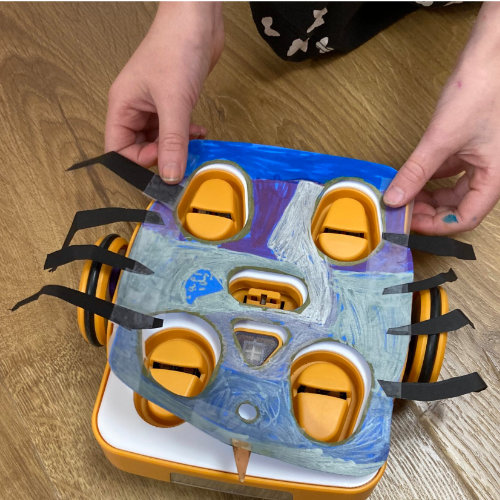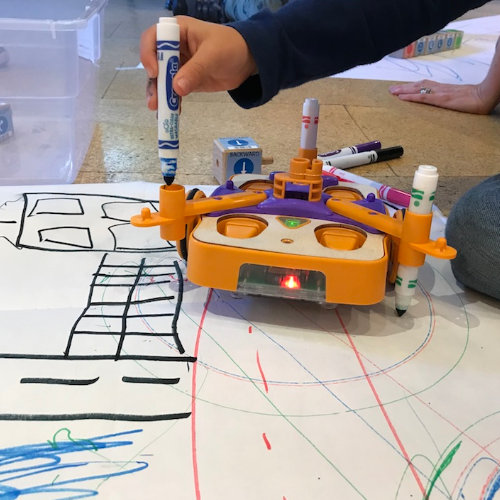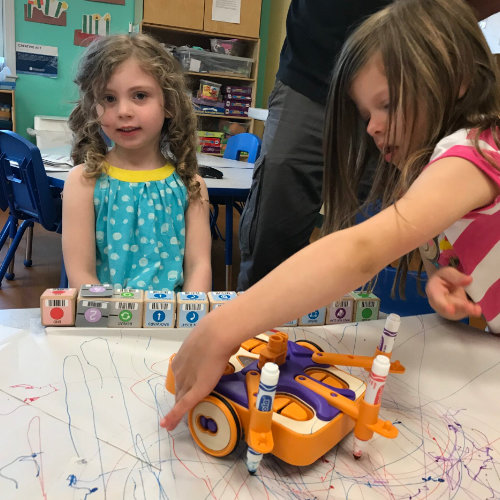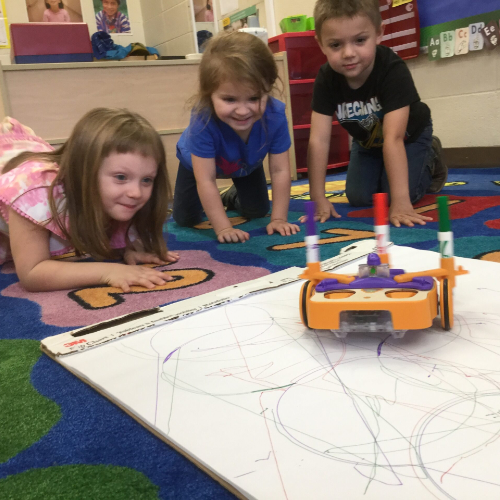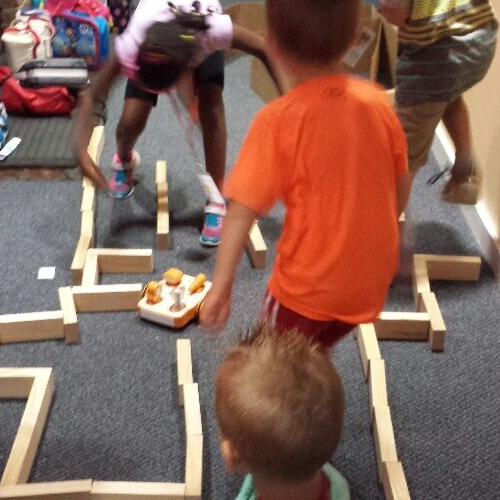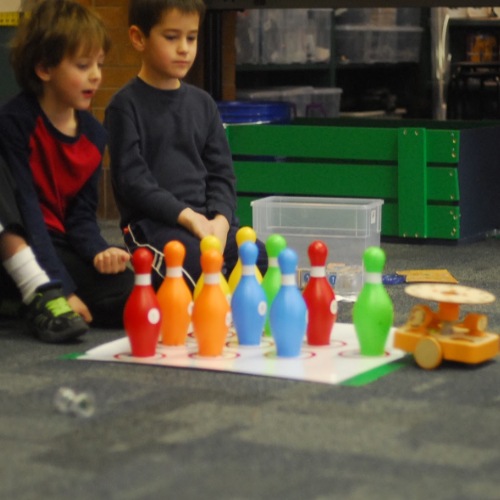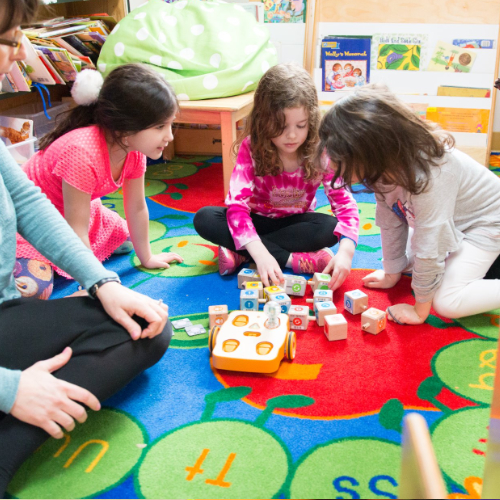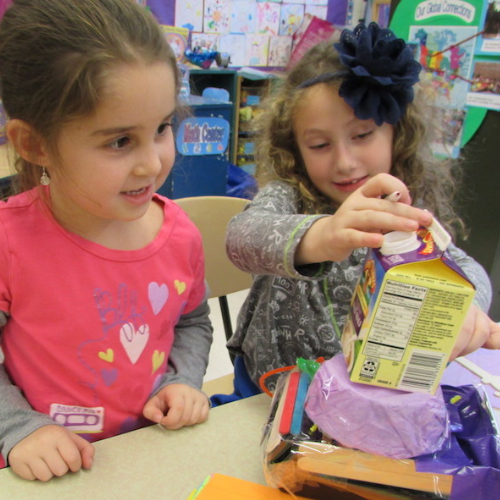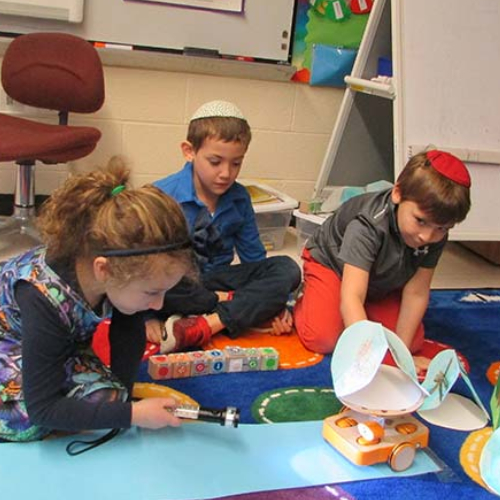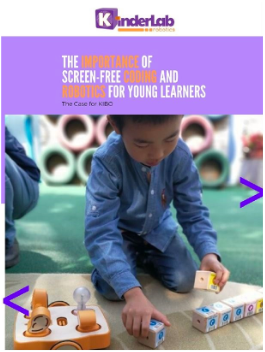STEAM Robotics in Early Childhood
KIBO, the hands-on, screen-free coding robot, teaches computer science, engineering, and computational thinking to young children.
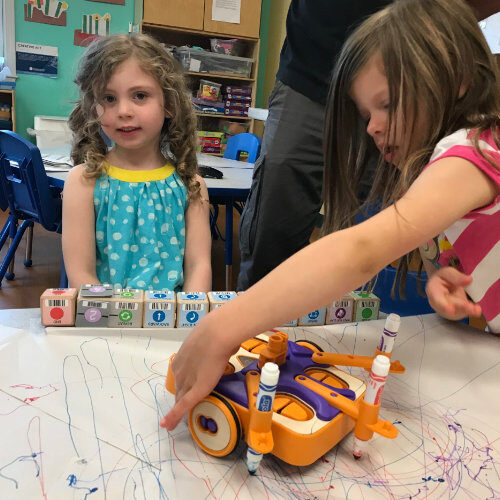
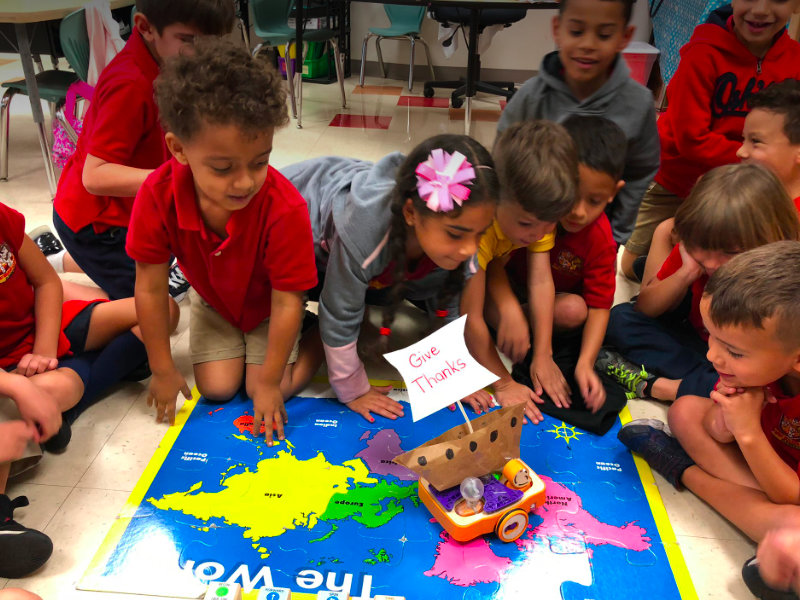
Ever Hear the Phrase "Kids Are Sponges"?
…that’s because they pick up on everything! And if you think they’re too young to grasp the concept of STEAM learning, coding, programming, and robotics you’d be incorrect. The earlier the better!
STEAM robotics in early childhood sparks kids’ interest in coding, robotics, and engineering. Young children are curious about the world around them, and today that world includes technology.
But what is the best approach to promoting positive, creative, and educational engagement with technology when they are inundated with screen-time? Give your PreK-5th grade students the playful, hands-on (and screen-free!) KIBO robot.
Introduce developmentally appropriate robotics disguised as PLAY!
KIBO teaches STEAM robotics in early childhood education. Integratng computer science, engineering, and computational thinking with creativity and the arts – all in one little robot. The curriculum is standards-aligned and supports deep cross-curricular connections to science, ELA, math, and social studies. And did we mention the play element? Look for yourself…
KIBO Offers...
-
A coding and robotic platform that can be easily integrated into existing curriculum or classroom projects, such as literacy, social studies, science, math, and art curricula.
-
STEAM learning to meet your early learning Computer Science standards.
-
Over 160 hours of standards-aligned STEM curriculum and teaching materials to ensure success when implementing KIBO in classrooms.
-
Easy to implement lesson plans and fun play-based activities.
-
Training and support in integrating robotics into classrooms with a wide range of cross-curricular connections to literacy, community, dance, science, and more!
Based on 20+ years of early child development research, used in 70+ countries and tested and approved by thousands of children, educators and their caregivers, KIBO has proven efficacy in helping kids learn STEAM, and getting them excited about it!
What are the Benefits of Using STEAM Robotics in Early Childhood
Coding Teaches the Literacy of the 21st Century
Coding is becoming as fundamental to work, education, and culture as literacy was in earlier centuries. Not every child needs to become a computer programmer, but coding gives children the tools to create and participate in a culture, society, and working world increasingly structured by computers. Teaching children to code gives them fluency in a new set of tools for self-expression.
KIBO offers an inviting, engaging platform for children to start their journey into creating with code.
KIBO’s block-based coding language gives children control over the robot’s movements, sounds, and sensors, allowing them to express their imaginations with code. With KIBO children can create with technology – tell stories, create characters, and explore their world.
Coding Develops Computational Thinking Skills
How do you solve a problem in a structured way? With computational thinking, you model the problem, break it down into smaller sequential steps, invent solutions, and test them out. The term “computational thinking” grew out of work in the 1980s by Seymour Papert, a pioneer in teaching children to create with code. More recently, theorists and educators have begun to explore the connections between computational thinking and the cognitive skills developed in early childhood.
When children plan a sequence of actions for KIBO to perform, they assemble their program as a line of wooden command blocks. They scan the blocks with KIBO’s barcode scanner, one by one in sequence. When the robot acts out the sequence, children can follow along by referring to the blocks they have scanned.
Technology Becomes the Playground
Children’s exploration of technology should be age-appropriate, safe, and creative. A technology rich experience for children should be modeled on the idea of a playground. On a playground, children move and explore, they invent games and stories, and they collaborate with peers and negotiate conflicts. They are supervised by adults throughout, but they lead their own experience.
The best technology experiences for children are technology playgrounds, filled with creativity, exploration, and social engagement. When building and programming with KIBO, children follow their own creative interests within a technological space that has been carefully designed to support their developmental needs. They work together, they discover, and they share as they create.
Robotics Makes Coding Tangible and Concrete… and Screen-Free!
Educational theorists have long recognized that young children think and learn best when moving, playing, building, and engaging with concrete objects. Traditional coding is often screen-based and abstract. But with robotics, children’s code affects the physical world – the robot moves and reacts based on the instructions the children give it. The robot is an “object to think with,” in Seymour Papert’s phrasing.
Even better, with KIBO, the programming language itself is tangible and concrete. Children program KIBO by sequencing physical wooden blocks, with no screen time for these young learners. Studies with KIBO demonstrate that children benefit from connecting programming concepts to concrete, physical objects, reinforcing learning in an age-appropriate way.
Using Technology to Break Down Engineering Stereotypes
Scientific and technical fields suffer from a gender participation gap. Research shows that even in early childhood, children are already beginning to form opinions and stereotypes about which tools and technologies are better suited towards boys. By engaging young children in coding and robotics activities before these stereotypes begin to take root, we can help them build positive associations with technology and engineering and a self-image as a creator with technology.
KIBO is purposefully designed with a neutral aesthetic and in gender neutral colors so that it is appealing to all children. KIBO includes building platforms to allow children to extend and decorate the robot with arts and crafts materials, providing an open-ended building and design experience which draws on a wide range of children’s interests.
The Engineering Design Process Develops Grit and Perseverance
Working with robotics and coding engages with the engineering design process. This process encourages children to identify a problem, imagine and plan a solution, build and test their creation, and share their work with peers. In this process, things won’t always work as intended – ask any engineer!
The process is set up to expect students to test, fix, and debug their work, so students focus on continually making changes and improvements rather than on being right or wrong – a “growth mindset.” As they seek input and advice from peers, children also develop collaborative social skills around a shared project.



















